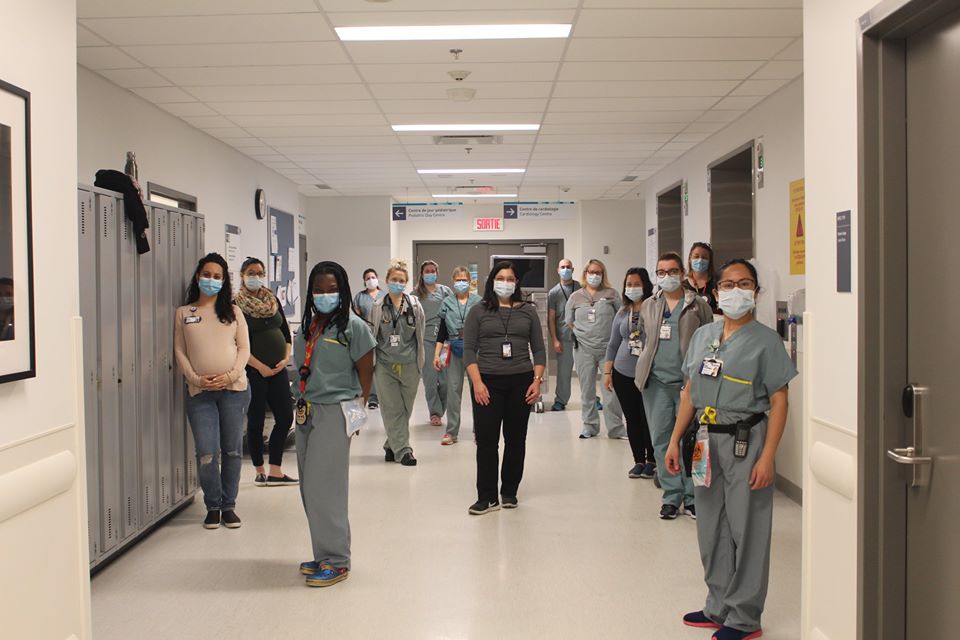Two adult patients with COVID-19 were treated in a Montreal pediatric intensive care unit this week — a sign of how hospitals are stretching to accommodate the pandemic.

Hospitals in some areas are being forced to try different care plans, and to collaborate across long-standing walls.
The equipment, nursing care, medical practices, medicines and even emergency procedures are different, but pediatric medical staff and hospitals have realized they can care for adults, too.
Children’s hospitals across the country have been planning for this situation.
The Montreal Children’s Hospital, which had the two adult patients, and the Royal Victoria Hospital began their planning together in early March. With the virus affecting adults much more than children, the children’s hospital’s beds were seen as possible spaces for adult patients, said Homier.
- ‘Bacterial vampirism’: Deadly pathogens attracted to human blood, study finds
- Shoppers faces proposed class action over claims company is ‘abusive’ to pharmacists
- Most Canadian youth visit dentists, but lack of insurance a barrier
- Landmark smoking ban that would phase out sales passes U.K. parliament
“Originally there was some resistance, which was appropriate from a safety perspective,” Homier said.
But the children’s hospital began training its staff, ordering adult-sized equipment and putting procedures in place to care for adults.
“Although a patient is a patient, we do do things differently in pediatrics,” said Cindy McCartney, nurse manager of patient flow at Montreal Children’s Hospital.
READ MORE: Coronavirus: Red Cross to train nursing home volunteers in Montreal
The hospital needed to order adult-size blood pressure cuffs, catheters, incontinence products and other supplies. Even the way that patients are hooked up to the monitors needed to be changed.
McCartney said the biggest differences are in the hands-on care of the patient.
“The basic care of an adult in ICU is somewhat different from the care of a child,” she said. “The early signs of decompensation (deterioration) are different.”
The pediatric nurses and doctors were trained by their adult medicine colleagues on early warning signs and how to respond. The teams ran simulation exercises to practise managing a decompensating adult patient and visited the adult ICU to learn on site.
The normal heart rate and breathing rate also are different for adults, and alternate medications needed to be ordered.
“We made cheat sheets and put them around the unit,'” said Dr. Tanya Di Genova, pediatric intensive care physician and medical director of patient flow at the children’s hospital.
Last weekend, two adults with COVID-19 were identified as good candidates to be cared for in the pediatric ICU. Although the Royal Victoria Hospital ICU was not at capacity, the complex balance of re-organizing to meet the care needs on the wards, in cardiac units, and in the ICU called for the pediatric hospital contingency plan to be used.
“t’s easier to fill beds that are already empty and staffed, instead of creating new beds with new staff,” said Homier.
READ MORE: Coronavirus: Quebec counts 117 new deaths, cases climb to over 17,500
The hospitals had previously determined that the best patients to transfer to the children’s hospital would be those who had already been stabilized, had a single medical condition, and whose medical needs were relatively familiar to pediatricians.
The main life-threatening complication of COVID-19 — acute respiratory distress syndrome (ARDS) — also is a relatively common condition in critically ill children.
Other potential patients could be those with medical complications from lifelong conditions such as Crohn’s disease, sickle cell disease or cystic fibrosis.
“The age was less important than the care needs,” said Homier.
Di Genova was on call last weekend when the two adults, including one on a ventilator, were in the pediatric ICU. Both patients have now been discharged from the ICU, with one still in hospital.
READ MORE: After refusal, world leader Dr. Liu allowed to help in Quebec’s long-term care facilities
“We felt like we were prepared and wanted to do it. We couldn’t prepare any more,” said Di Genova.
“The first thing that came up in discussion with colleagues was that it wasn’t as different as we thought. Although nervous and anxious to start, our team saw that this was out of our norm but it was definitely doable ? The medicine was not so different.”
The two hospitals are continuing to work together, now planning for a pod in the pediatric emergency department to be sealed off and made available to care for adult patients.
“We’re all in it together,'” said McCartney. “People who didn’t work together before are working together now ? It’s been an eye-opening experience and will leave us with long-standing transformation.”
— Michelle Ward is a pediatrician, associate professor and journalist in Ottawa.




Comments